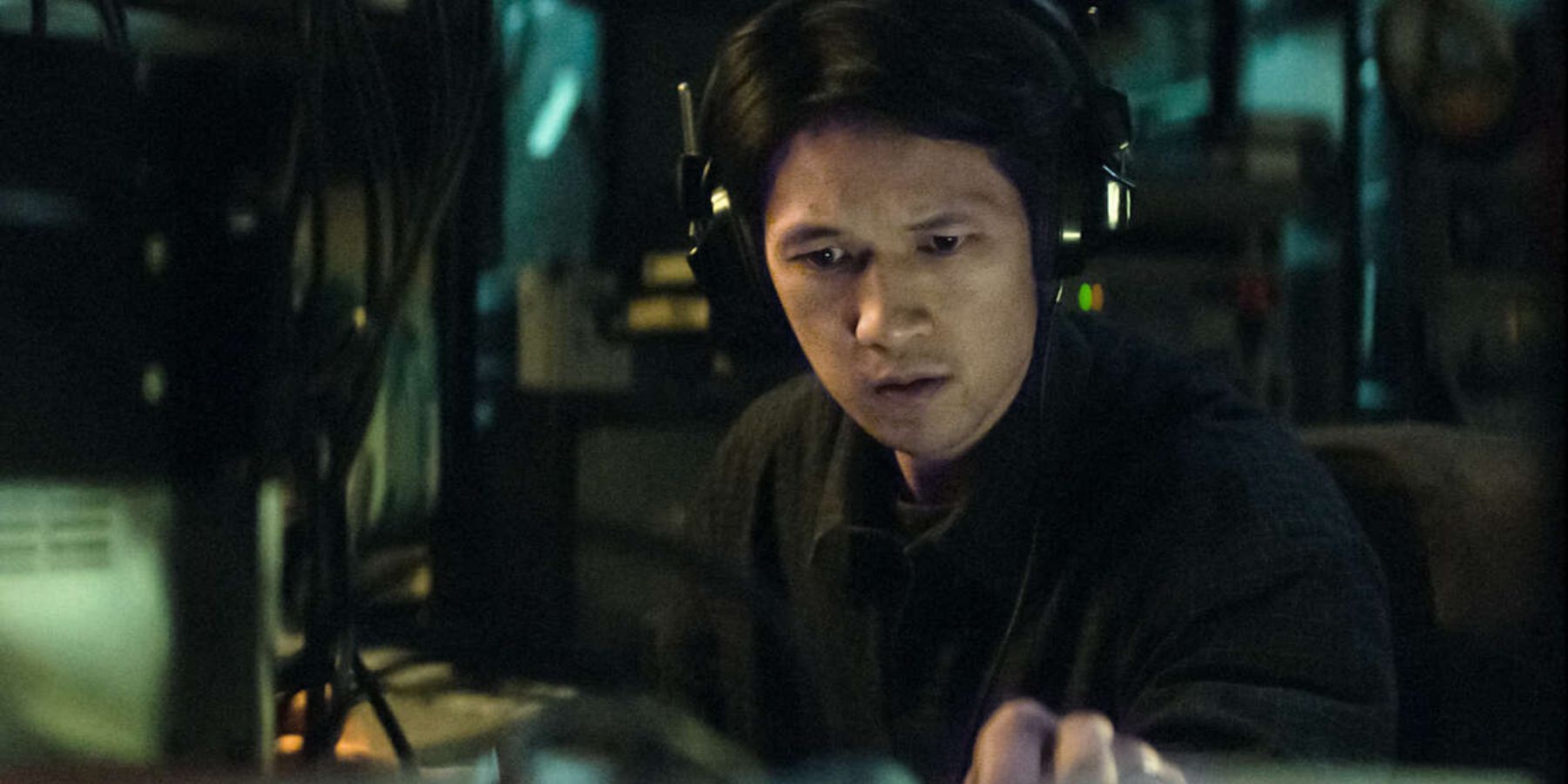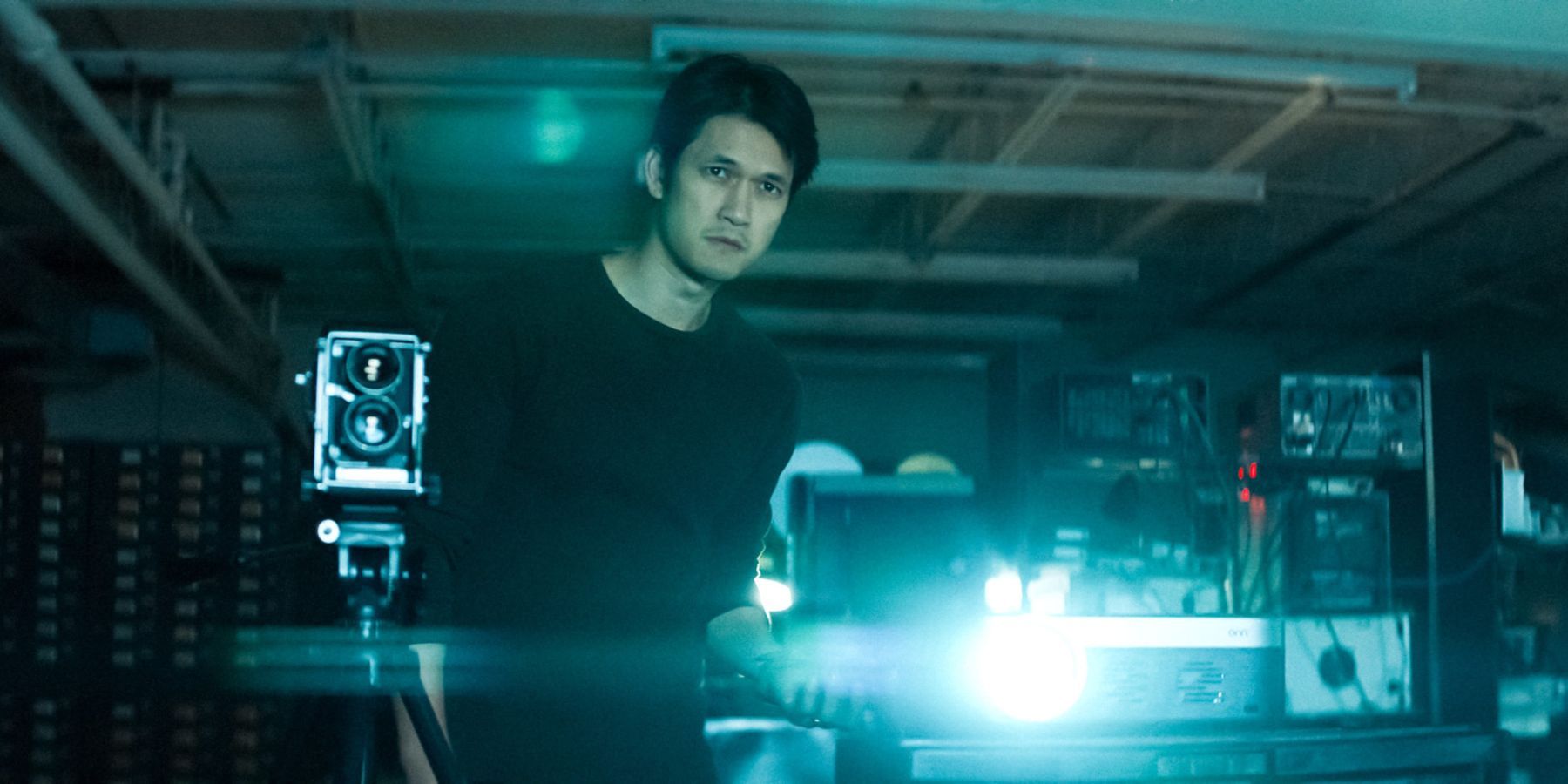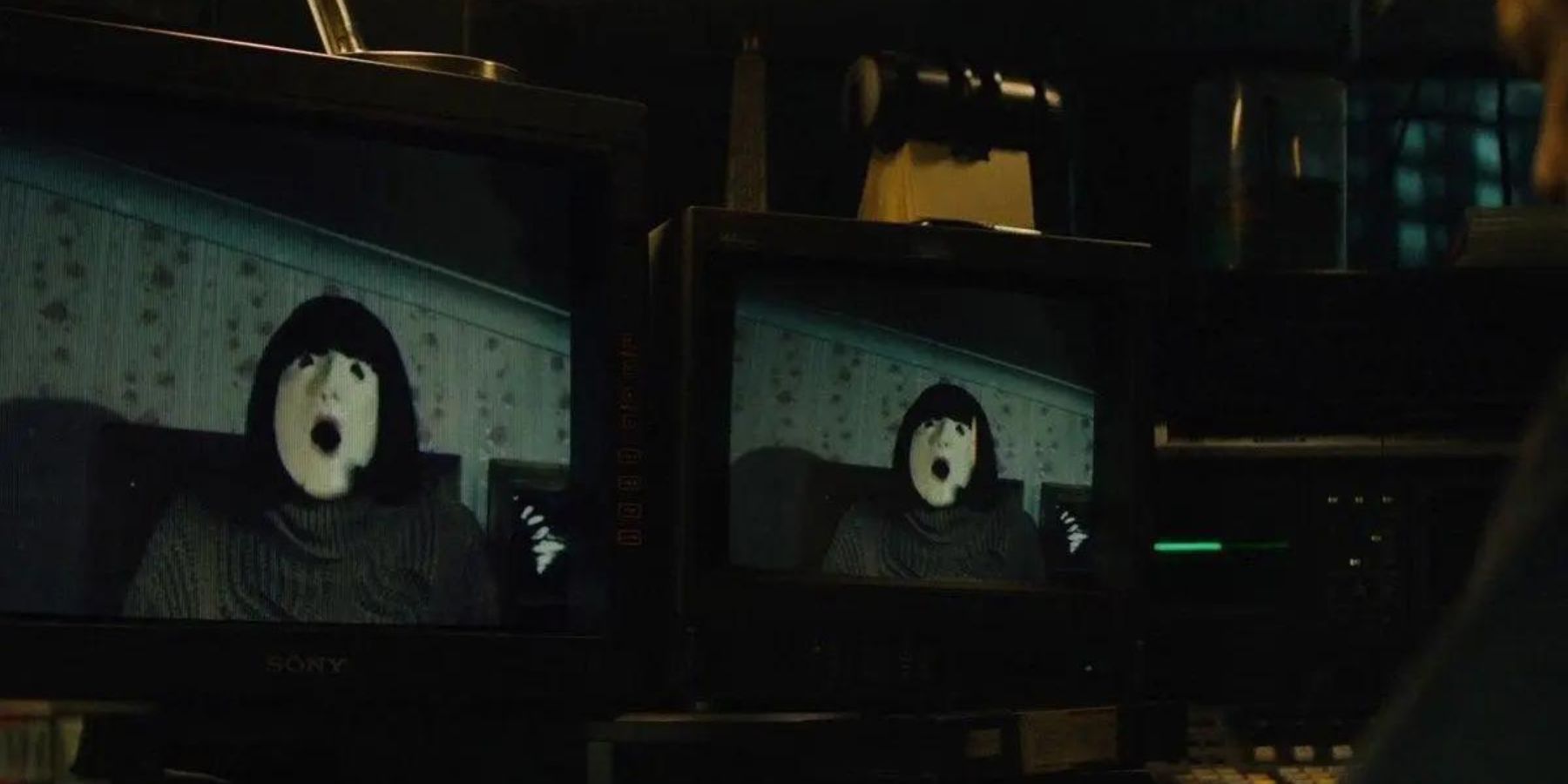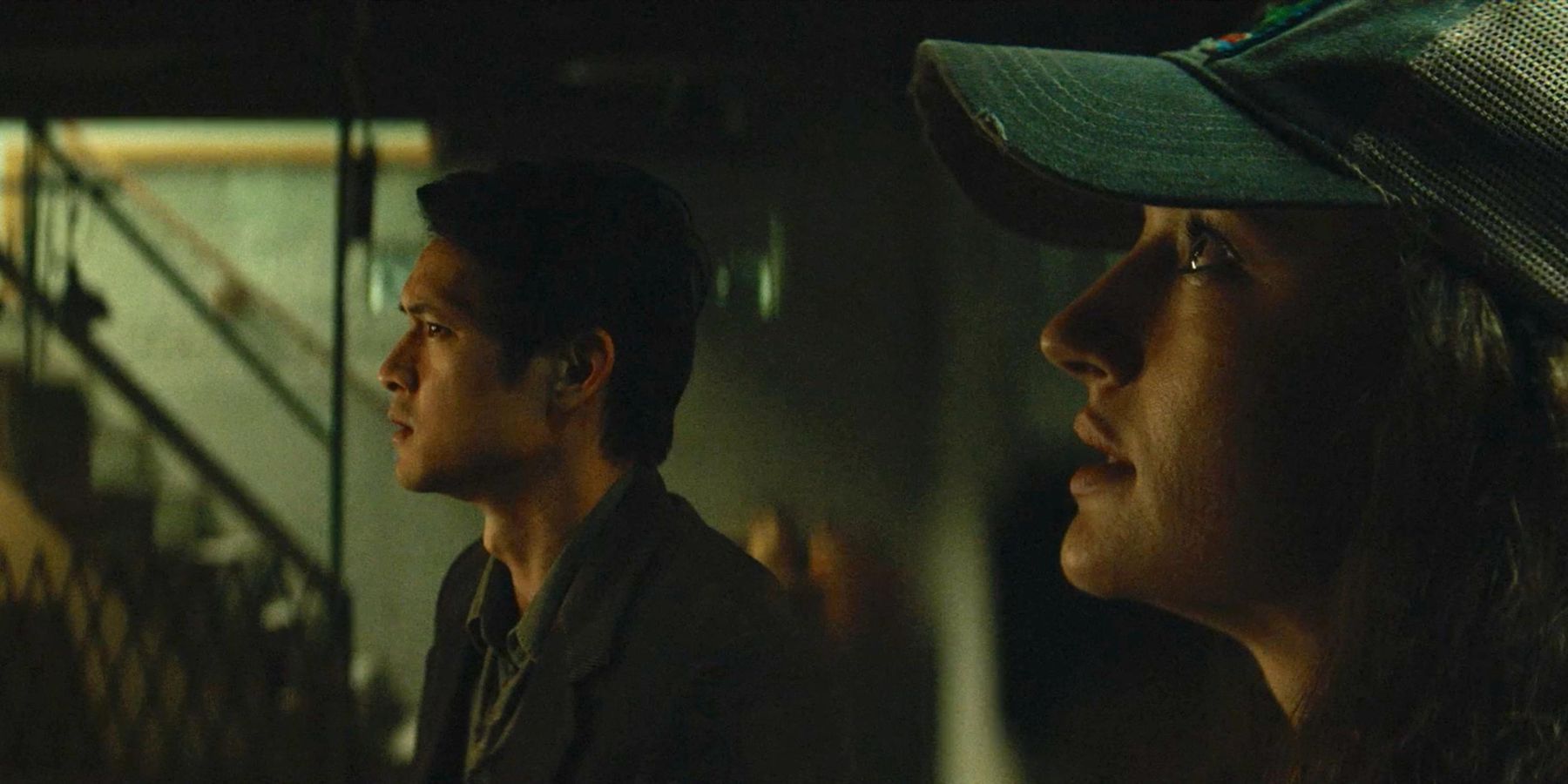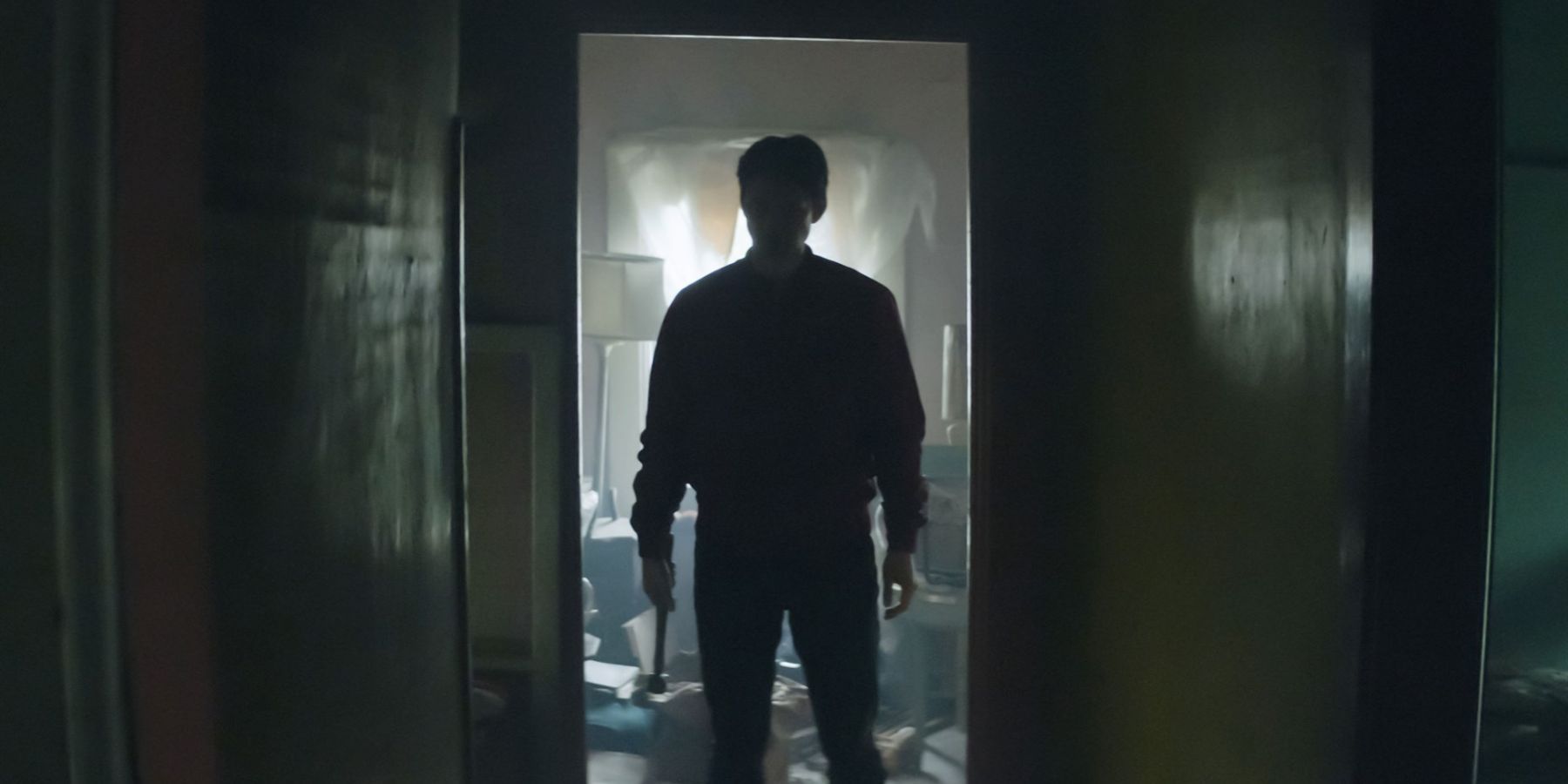Grief over the loss of a loved one is among the most challenging experiences anyone can go through. But what if sorrow caused one to reach a point where looking for answers sent one on a path that was even stranger and loopier than the pain of losing anyone at all? One of the most difficult, yet most relatable, topics one can examine through the horror genre's lens is tragedy horror. Jacob Gentry's 90's tinged horror-thriller Broadcast Signal Intrusion focuses on these universal but personal themes.
To create an emotionally compelling atmosphere, Broadcast Signal Intrusion bravely adopts the retro persona of a mystery-thriller from the 1990s. Broadcast Signal Intrusion, while primarily a mystery-thriller, captures the true essence of what the intense feelings of loss can cause people to do, becoming so fixated on closure that it becomes them.
As a visual experience, Broadcast Signal Intrusion is a hard one to pin down. The film centers around James (Harry Shum Jr.), whose wife Hannah (Erin Shanagher) has been missing for several years. While the film suggests that she was abducted, the tenebrous finale proves that its ambiguity leaves more questions than answers. Was Hannah abducted, or is another darker ending lurking in the shadows?
Broadcast Signal Intrusion takes place in Chicago in 1999. From the very beginning, Gentry's flair for molding nostalgia and refinement of films past is sewn into every moment of this film. Gentry cleverly combines cinematic nostalgia with James' pain and obsession, which he has never allowed himself to let go of. Fitting in with the mystery thrillers of the time and vignettes of De Palma's neo-noir classic, Blowout, Broadcast Signal Intrusion creates a distinctive tension paired with conspiracy theory myopia.
James has remained emotionally closed off to those around him since his wife's disappearance, with photography and repairing old electronics serving as his only vice and solace of connection to the past. Gentry uses outdated electronics and organic gritty footage to convey a sense of authenticity paired with James' isolation from the world, while the film's cinematography and music lend themselves well to the genre period. Even the way he communicates with people through post-it notes shows that since her death, he has conformed to his own bubble and keeps people at arm's length.
During his nightshift one night, James is archiving videotapes for the local television station when he comes across a mysterious cut in the broadcast. A broadcast signal intrusion occurs featuring footage of a masked woman in a staged setting with bizarre audio attached to the video. While viewers do not know who this woman is, James starts to make the case that the digital intrusion and his wife's disappearance are closely connected. This ultimately leads down an obsessive rabbit hole of other videos that may contain clues to his wife's disappearance.
While at the crux of this is an emotional story about a man fiercely connected to loss and the past, James' finding of the digital intrusions on the videotapes collides with a deeper meaning. During this time, the internet was blossoming into something where people were not only finding ways to connect on a non-physical level, but it also allowed people to create groups and a sense of reality outside their own. Gentry faithfully connects these subjects to draw out a resonance, although lost in time, that still resonates with all of us.
An affinity for something one strongly believes in or deeply loves creates a faction of like-minded individuals, leading to intense infatuation or anxiety against the things that don't fit within the wheelhouse of those concepts. The BBS chats and online culture of the 90s bode well with the contemporary themes of today. From Facebook groups to Discord channels, there is a digital space for everyone to find a place where they belong, where one can feel isolated and disconnected from the real world, yet still feel connected through internet lines of communication. Connecting technology, the past, and the future, Gentry draws a parallel between them throughout the first half of the movie.
His exhaustive search brings him to piece together the link between the two tapes. On May 2nd, a woman named Frederica Sexton went missing the day of the first intrusion. When the second intrusion happens another woman by the name of Marie Bedford also goes missing in the same fashion. He soon becomes convinced that a third tape may exist and that the other woman, his wife's disappearance, and signal intrusions are all connected. As he dives deeper into the BBS chats, it takes him down a rollercoaster of TV shows and rumors. Many draw different conclusions as to what the nature of the videos is. Are they apologies or something much more sinister? Wherever people's opinions lie, James wants to find the answers and needs the other tapes to solve murders. Not just for his wife but for the other women murdered as well.
He finds the name of Dr. Stuart Lithgow (Steve Pringle), who he thinks will give him the case files regarding the intrusions. Dr. Lithigow confirms he was involved in the case regarding the tapes, and they found no evidence regarding the women and the intrusion tapes. However, he followed the patterns of the intrusion tapes and concludes the last intrusion took place on November 23, 1996. James is intrigued by this because it supports both the validity of his theories and the fact that James' wife, Hannah, vanished around that time. When he comes to find the last video, the connections to the women that vanished seem to be true.
Many people, including Dr. Lithgow, caution him to stop looking for the intrusion tapes while he is conducting his impromptu investigation. He was warned not to confuse collusion with unintentional occurrences and that the emotional high of the experience would consume him. But as the story goes on, it becomes clear to the audience that his obsession with trying to prove his wife's disappearance has already consumed him. The tapes and BBS chatrooms offer him not only an escape from the reality of the pain of something he may never get back while at the same time giving him something to fight for and hope that she still may be out there.
While trying to find the final tape, he runs into Alice (Kelley Mack), a young woman who has been following him ever since he started this search. He chooses to allow her to assist him in his investigation even though he is still unsure of her and her motivations. When Alice starts looking through the tapes, she locates a phone number that they discover leads to a storage unit with a phone and answering machine. They find it belongs to a man named Stephen Meyers (Chris Sullivan), a critical clue and person of interest as he confessed to the signal intrusions in 1987.
When they go to visit Stephen, he tells them his story and motives for why he went down the path of signal intrusions. He reveals to them that in high school he didn't have much of a connection to others and found comfort in chat rooms and a group called Phreakers that would hack into telephone lines all over the country. This would inspire him to use signal intrusions for something much more elaborate, concealing his phone number in digital snoops so that he could be recognized and receive social validation. Noises are coming from above the room where they are speaking, and Stephen tells them to leave in an icy tone before they leave.
Back in the hotel room, Alice and James struggle with how they feel about Stephen's account. Alice believes they should leave things alone since they have identified the man who was behind the previous intrusions, even though James is still convinced that the person who kidnapped these women is still out there. Leaving them at a crossroads, they go to sleep for the night.
The next day, James awakens from his sleepy hangover to find the hotel room ransacked, Alice is gone, and the third tape in his possession. James plays the tape titled, Hannah Ballet '96, where the tape horrifying confirms that another intrusion took place after his wife Hannah disappeared. On the tape, he locates a location where the staged interference took place and decides to take a drive down there.
Gentry does an amazing job of handling these tense situations up until this point. As James moves closer to the answers he seeks, there is a sense of lingering uncertainty and the ominous reality that there are no answers to be found despite all the leads he discovers. Gentry maintains that the best of mysteries are never truly solved, which explains why people become attached to or fixated on discovering the answer. Although this concept is generally understood, it is painful to see James pursue many fruitless leads that don't lead to the outcomes he is looking for. This begs the question, does one keep searching for answers when the search has led them down a path of dead ends? Even if one locates the answers, will that be enough once one uncovers those truths? These are the challenging questions Gentry presses the audience with, and the conclusion prepares the audience for the uncertainty of that reality.
When he gets there, he finds the farmhouse in the intrusion video and a man named Michael Gardiner (Justin Welborn), whose hand matches the previous videos in terms of its distinctive hand markings. To force Michael to confess, James snaps and brutally assaults him while locking him in a cage. While it is clear that the man had some part in making the intrusion videos with these women, he refuses to confess. Seeing there is no other way to seek justice, he finds all the props in a dilapidated shed and the mask used in the video and forces Micheal to restage the setting, put on the mask, and read the confession to the abductions James has written. Viewers then see James digging a hole outside the shed, where it is deduced that James has killed and buried him. In this powerful scene, the roles are horrifically reversed. The proposed murderer becomes the tortured while the tortured becomes the cold-blooded killer. Showcasing the true nature of a man who has gone mad from pain and loss, James overturns the role of the horror protagonist and takes it to unnerving levels.
After James leaves the farmhouse, he is out driving late at night, where it is clear that although he feels that there was justice served in what he did, his delusions continue to haunt him. During the drive, viewers see James hallucinating with all the visions and noise obstructions from the videos suffocating his senses. What finally drives him out of his hysteria is a woman that walks out into the road, where he fatally hits her. When he gets out of the car to check on the woman, he discovers that she is a robot. However, when the robot begins to bleed out at the end of the movie, the mystery surrounding what happened to him that night is not resolved.
While difficult to pinpoint what happens in the final moments of the film, it is clear that Gentry wants the viewer to think about it. In an attempt to find a concrete answer for his wife's disappearance, James clings to the intrusion theories and the tapes, trying to make them fit a narrative that may not be true. Out of an obsessive need to get closure or balance in his life, he accepts these "truths" as it allows him to find clarity in a tenuous situation. When he hits the robotic woman in the closing moments of the film, one can only interpret this as a delusion blotting together with what may have happened in reality. The final scenes of the movie may simply be James having to confront a painful memory that is returning to him after accidentally killing his wife. He likely blocked out these memories for mental protection because he wasn't ready to face the truth.
Or could it mean that he accidentally killed someone else while driving on the road that he imagines as a robot because the thought of this woman's death on his hands was something he could not bear to take? He mentions to Alice earlier that he has trouble remembering certain things of his past. Could it be two separate incidents that happen at the end of the film, or is it one defining moment that mentally blocked his will to move forward?
Whatever the answers are, Gentry makes a fine example of how a path of obsession, madness, and loss can bring someone to do questionable things for the people they love. But there is a mental cost for all of it, often resulting in terrifying results.




